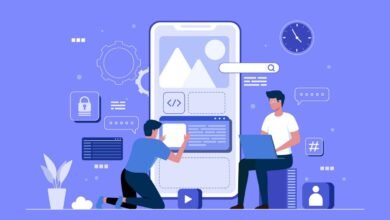
Developing an Android application can be an exciting venture, offering vast opportunities to reach millions of users worldwide. However, while the initial development costs are often discussed, several hidden expenses can significantly impact your budget if not anticipated. Understanding these hidden costs and knowing how to mitigate them is crucial for ensuring the success and sustainability of your app project. In this blog, we will delve into the lesser-known costs associated with Android application development and provide strategies to avoid unexpected financial burdens.
1. Maintenance and Updates
The Ongoing Commitment
One of the most overlooked aspects of app development is the ongoing maintenance required post-launch. Android devices come in various configurations, screen sizes, and OS versions, necessitating regular updates to ensure compatibility and optimal performance. Additionally, fixing bugs, addressing security vulnerabilities, and updating features based on user feedback are continuous processes that incur costs over time.
How to Mitigate
- Plan for Maintenance: Allocate a portion of your budget specifically for maintenance and updates.
- Automate Testing: Implement automated testing to quickly identify and fix issues.
- User Feedback Integration: Establish a streamlined process for collecting and integrating user feedback to prioritize updates effectively.
2. Server and Hosting Expenses
Beyond the App Itself
Many Android applications rely on backend servers to handle data storage, user authentication, and other functionalities. The costs associated with server infrastructure, data storage, and bandwidth can escalate, especially as your user base grows. Additionally, employing scalable cloud services might seem cost-effective initially but can become expensive with increased usage.
How to Mitigate
- Optimize Backend Architecture: Design your backend to be as efficient as possible, reducing unnecessary data processing and storage.
- Choose the Right Hosting Provider: Compare different hosting solutions to find one that offers scalability at a reasonable price.
- Monitor Usage: Regularly monitor server usage to anticipate scaling needs and adjust resources accordingly.
3. Licensing Fees and Third-Party Integrations
The Cost of Enhancements
Integrating third-party services like payment gateways, analytics tools, or specialized SDKs can enhance your app’s functionality and user experience. However, many of these services come with licensing fees or subscription costs that can add up over time. Additionally, some integrations may require specific licenses or certifications, further increasing expenses.
How to Mitigate
- Evaluate Necessity: Assess whether each third-party service is essential for your app’s core functionality.
- Seek Cost-Effective Alternatives: Look for open-source or more affordable alternatives that offer similar features.
- Negotiate Terms: When possible, negotiate licensing terms or bulk pricing with service providers.
4. Marketing and User Acquisition
Beyond Development Costs
Building a great app is only half the battle; attracting and retaining users requires a solid marketing strategy. Costs related to app store optimization (ASO), advertising campaigns, influencer partnerships, and promotional materials can quickly inflate your budget. Even the best app may fail to gain traction in a saturated market without effective marketing.
How to Mitigate
- Develop a Marketing Plan Early: Incorporate marketing strategies into your development timeline to allocate resources effectively.
- Leverage Organic Channels: Utilize social media, content marketing, and community engagement to promote your app without hefty advertising costs.
- Measure and Optimize: Continuously track the performance of your marketing efforts and adjust strategies to maximize ROI.
5. Compliance and Legal Fees
Navigating Regulations
Depending on the nature of your app, you may need to comply with various regulations such as data protection laws (e.g., GDPR), industry-specific standards, or app store policies. Ensuring compliance often requires legal consultation, documentation, and potentially modifying your app to meet regulatory standards, all of which can incur significant costs.
How to Mitigate
- Understand Regulatory Requirements: Research and understand the regulations that apply to your app from the outset.
- Consult Legal Experts: Invest in legal consultation early in the development process to avoid costly modifications later.
- Implement Compliance Features: Design your app with compliance in mind, incorporating necessary features like data encryption and user consent mechanisms from the beginning.
6. Design and User Experience Enhancements
Investing in Aesthetics and Usability
A visually appealing and user-friendly design is critical for the success of your app. High-quality UI/UX design often requires hiring specialized designers, conducting user testing, and iterating on design based on feedback. These activities can significantly increase your development costs but are essential for ensuring user satisfaction and retention. Understanding the Android application development cost associated with design and user experience enhancements helps in planning a budget that accommodates these vital aspects without compromising on quality.
How to Mitigate
- Prioritize User Experience: Allocate sufficient resources to design early in the project to avoid costly redesigns later.
- Use Design Templates: Utilize pre-designed templates or frameworks to reduce design costs without compromising quality.
- Conduct Efficient Testing: Implement streamlined user testing processes to gather feedback quickly and make necessary adjustments without extensive delays.
7. Training and Documentation
Empowering Your Team
Proper training and comprehensive documentation are vital for the ongoing development and maintenance of your app. Ensuring that your development team is well-versed in the technologies and methodologies used in your project can prevent errors and improve efficiency. However, training sessions, workshops, and creating detailed documentation can add to your overall costs.
How to Mitigate
- Invest in Initial Training: Provide thorough training to your team at the beginning of the project to minimize future errors and inefficiencies.
- Create Reusable Documentation: Develop comprehensive documentation that can be referenced and updated as needed, reducing the need for repeated training sessions.
- Foster a Learning Culture: Encourage continuous learning and knowledge sharing within your team to keep skills up-to-date without extensive formal training programs.
8. Quality Assurance and Testing
Ensuring App Reliability
Rigorous testing is essential to deliver a stable and reliable application. Quality assurance (QA) processes, including functional testing, performance testing, and security testing, require time and resources. Skimping on QA can lead to post-launch issues that are costly to fix and can damage your app’s reputation.
How to Mitigate
- Implement Automated Testing: Use automated testing tools to increase efficiency and reduce the time and cost associated with manual testing.
- Adopt Agile Methodologies: Incorporate QA into your development process through agile practices, allowing for continuous testing and early detection of issues.
- Prioritize Critical Features: Focus your QA efforts on the most critical features and functionalities to ensure they meet quality standards without overextending resources.
9. Localization and Internationalization
Expanding Your Reach
If you plan to target a global audience, localizing your app for different languages and regions is essential. Localization involves translating content, adapting to local cultures, and ensuring compliance with regional regulations. These efforts require additional resources, including hiring translators and cultural consultants, which can add to your development costs.
How to Mitigate
- Plan for Localization Early: Integrate localization into your development process from the beginning to avoid costly adjustments later.
- Use Localization Tools: Utilize software tools and platforms that facilitate easier translation and adaptation of your app.
- Prioritize Key Markets: Focus your localization efforts on the regions that are most important to your business to manage costs effectively.
10. App Store Fees and Compliance
Navigating App Store Requirements
Publishing your app on the Google Play Store involves certain fees and compliance requirements. These include developer registration fees, costs associated with meeting app store guidelines, and potential expenses for app certification or review processes. Non-compliance can lead to delays or rejection, incurring additional costs to rectify issues.
How to Mitigate
- Understand App Store Guidelines: Thoroughly familiarize yourself with Google Play Store requirements to ensure your app meets all standards before submission.
- Budget for Fees: Incorporate app store fees into your overall budget to avoid unexpected financial strains.
- Prepare Documentation: Keep all necessary documentation and assets ready to streamline the app submission and review process.
Strategies to Manage Hidden Costs
Comprehensive Budgeting
Creating a detailed and realistic budget that accounts for both visible and hidden costs is the first step in managing your Android application development expenses. Include categories for maintenance, server costs, licensing fees, marketing, legal compliance, design, QA, localization, and app store fees.
Project Management Tools
Utilize project management tools to track expenses, monitor progress, and identify potential cost overruns early. Tools like Trello, Asana, or Jira can help you stay organized and ensure that your project stays within budget.
Regular Financial Reviews
Conduct regular financial reviews to assess your spending and adjust your budget as needed. This proactive approach allows you to address any financial issues before they escalate, ensuring that your project remains financially viable.
Choosing the Right Development Partner
Partnering with experienced and reliable developers or development agencies can help minimize hidden costs. An experienced team can anticipate potential issues, implement efficient development practices, and provide accurate cost estimates, reducing the likelihood of unexpected expenses.
Conclusion
Developing an Android application involves more than just the initial development costs. Hidden expenses such as maintenance, server fees, licensing, marketing, compliance, design enhancements, training, QA, localization, and app store fees can significantly impact your budget if not properly managed. By understanding these hidden costs and implementing strategies to mitigate them, you can ensure a smoother development process and a more sustainable financial plan for your app project. Careful planning, comprehensive budgeting, and ongoing financial oversight are essential to navigating the complexities of Android application development costs and achieving long-term success.











